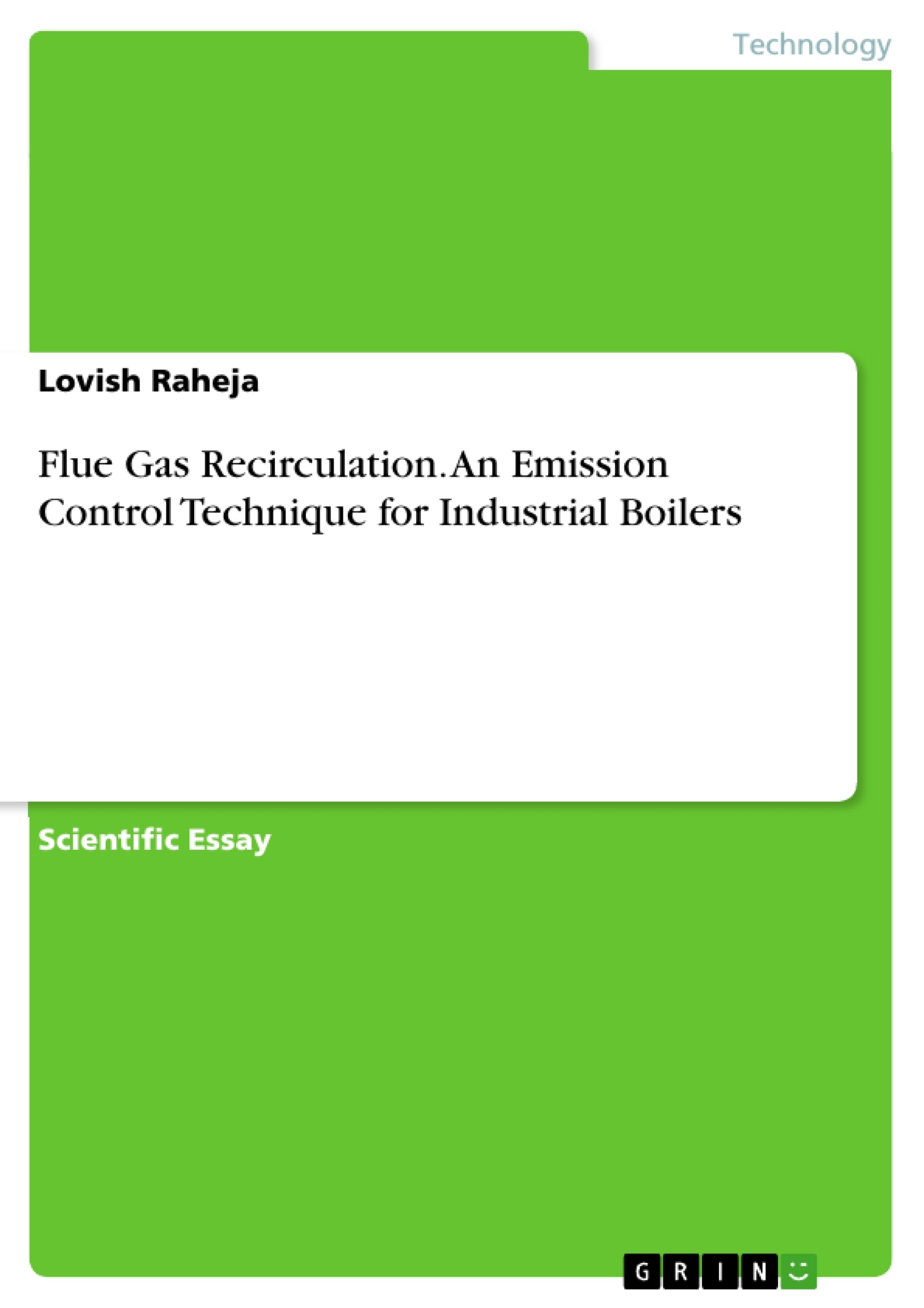It is now a well-established fact that air pollution has worsened over the years and the major credit goes to industrial growth. The boilers and stoves are one of the major sources of air pollution from the industries. Therefore, controlling their emissions to a significant extent can lead to the reduction of air pollution. The greenhouse gases of family NOx are important pollutants to be considered in this regard. As per the study by CPCB (2011), in Delhi, industry power plants contribute to approximately 65% of total NOx emissions. Therefore, control of this pollutant may not only lead to the air quality improvement in terms of NOx pollution but will also be beneficial to the environment as NOx cause many ecotoxic effects such as acid rain, eutrophication, ozone formation etc.
There are various emission control technologies available for NOx emissions, which can be categorized into two parts-Combustion Control and Post-combustion technologies in the particular context of boilers. Post-combustion methods are mostly expensive as compared to the combustion control methods and are usually not deployed for boilers having input less than 100 MM Btu/hr. So, the focus should be more on combustion control rather than post-combustion treatment. One such powerful method of combustion control is named Flue Gas Recirculation (FGR) which causes a significant reduction in NOx emissions by recirculating flue gases from the boiler exhaust duct into the main combustion chamber. The essay discusses details of the different aspects of this technology.
Table of Contents
- INTRODUCTION
- FLUE GAS RECIRCULATION: DETAILED CONCEPT AND MECHANISM
- FACTORS TO BE CONSIDERED FOR FGR SYSTEMS
- FGR Rates
- FGR Location
- Air Preheating Temperature
- Oxygen Concentration
- ADVANTAGES AND DISADVANTAGES
Objectives and Key Themes
This document presents a comprehensive overview of flue gas recirculation (FGR) as a technique for controlling NOx emissions in industrial boilers. It explores the mechanisms behind FGR, examines factors that influence its effectiveness, and discusses the advantages and disadvantages of implementing this technology.
- The mechanism of FGR in reducing NOx emissions.
- Key factors influencing FGR effectiveness, such as recirculation rates, air preheating temperature, and oxygen concentration.
- The benefits of FGR in terms of NOx reduction and potential fuel savings.
- The drawbacks of FGR, including potential efficiency reductions and flame stability issues.
- The need for further research to optimize FGR systems and address limitations.
Chapter Summaries
- INTRODUCTION: This section introduces the problem of air pollution caused by industrial boilers and emphasizes the need for effective emission control technologies. It highlights NOx as a significant pollutant and the importance of reducing its emissions for environmental protection. The section then introduces FGR as a promising combustion control method for NOx reduction.
- FLUE GAS RECIRCULATION: DETAILED CONCEPT AND MECHANISM: This section delves into the detailed concept and mechanism of FGR. It explains how recirculating flue gases from the boiler exhaust duct into the combustion chamber can reduce NOx formation by lowering combustion temperatures. The section also discusses how FGR can help regulate temperature and prevent the formation of NOx.
- FACTORS TO BE CONSIDERED FOR FGR SYSTEMS: This section explores the factors that need to be carefully considered when implementing FGR systems. It analyzes the impact of recirculation rates, FGR location, air preheating temperature, and oxygen concentration on the effectiveness of FGR in reducing NOx emissions.
- ADVANTAGES AND DISADVANTAGES: This section presents the advantages and disadvantages of employing FGR systems. It highlights the benefits of reduced NOx emissions, potential fuel savings, and improved boiler efficiency. However, it also discusses potential downsides, such as slight reductions in boiler efficiency under certain conditions, burner capacity limitations, and flame stability issues.
Keywords
The key terms and concepts presented in this document include Flue Gas Recirculation (FGR), NOx emissions, industrial boilers, combustion control, air pollution, thermal NOx, recirculation rates, air preheating temperature, oxygen concentration, flame stability, burner capacity, and boiler efficiency.
- Citation du texte
- Lovish Raheja (Auteur), 2022, Flue Gas Recirculation. An Emission Control Technique for Industrial Boilers, Munich, GRIN Verlag, https://www.grin.com/document/1263320



